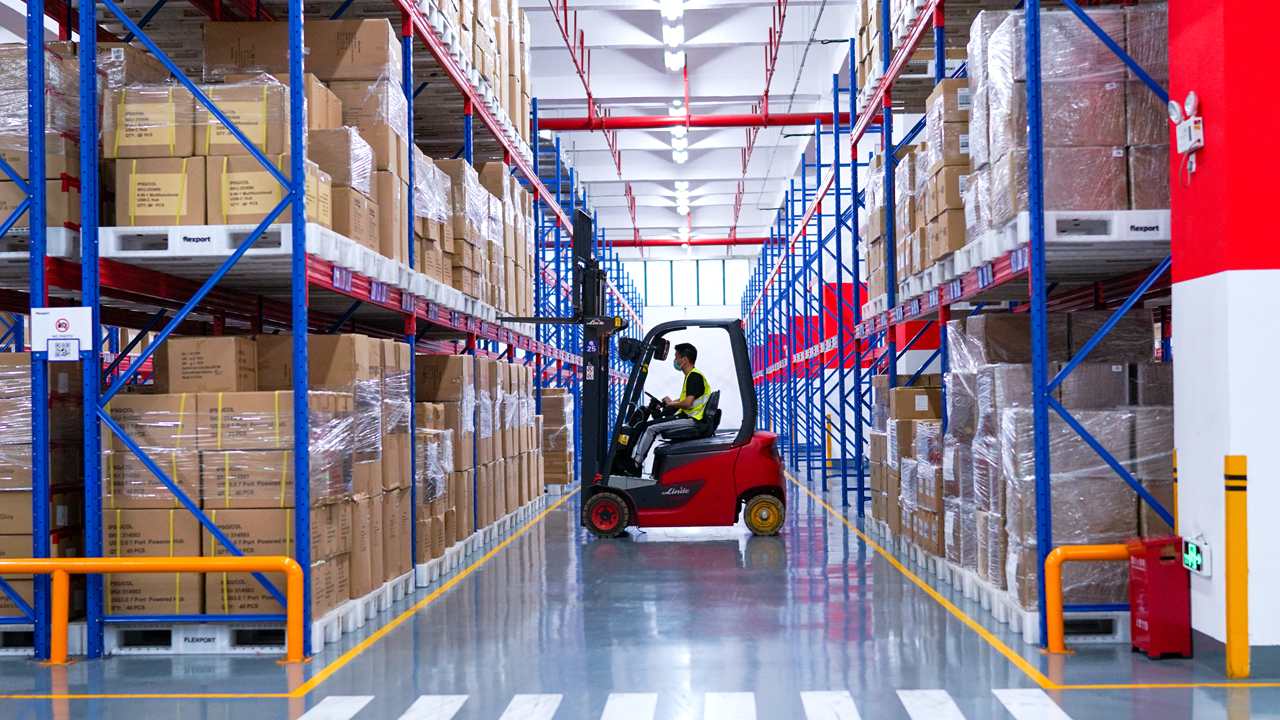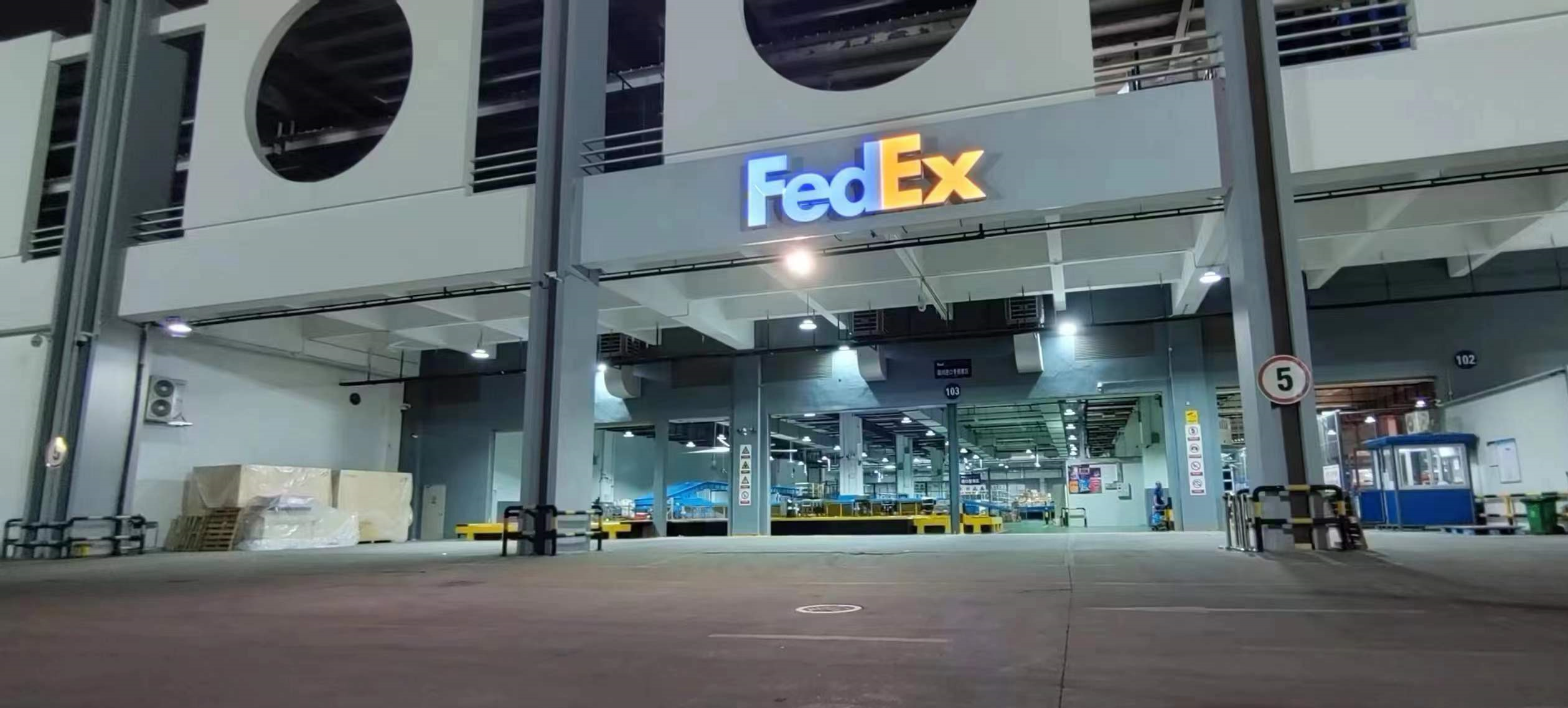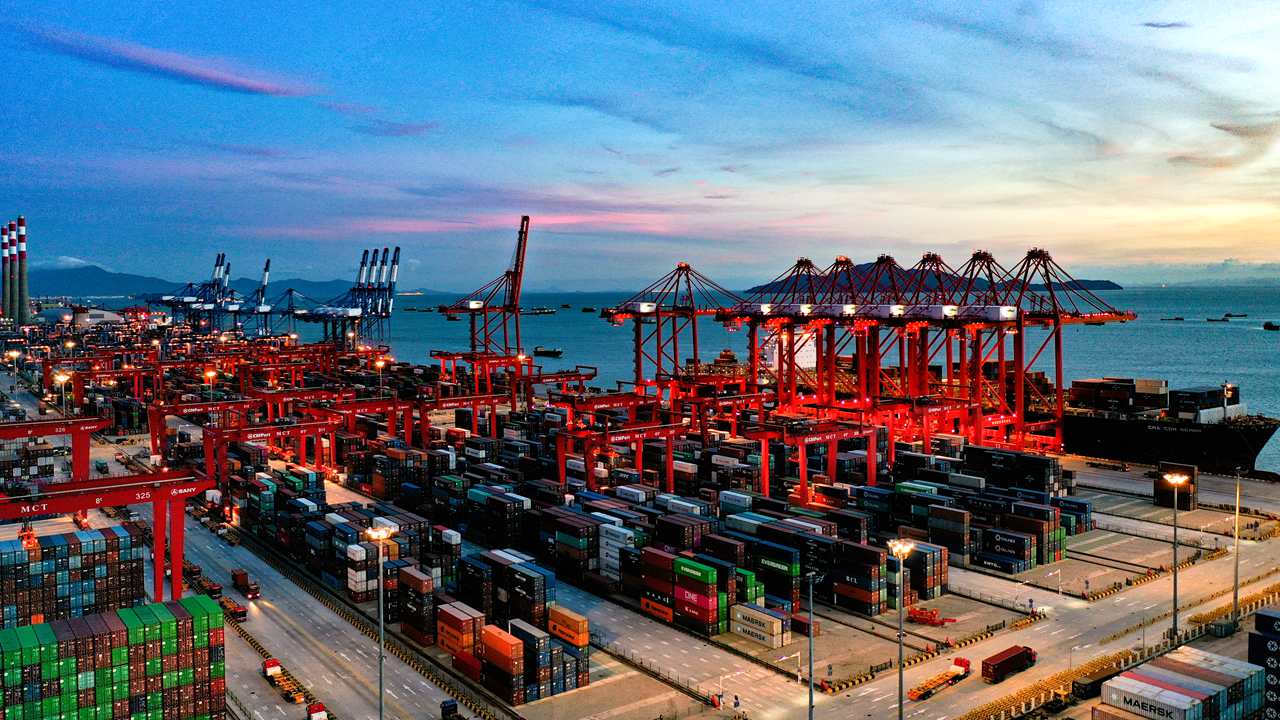Cross-border e-commerce helps Shenzhen foreign trade top 1 trillion yuan
Writer: Yang Yunfei | Editor: Liu Minxia | From: | Updated: 2024-04-24
Cross-border e-commerce has become a new growth engine to boost Shenzhen’s foreign trade, which jumped 28.8% year on year to 1.02 trillion yuan (US$140.8 billion) in the first quarter this year.
Shenzhen’s cross-border e-commerce topped 110 billion yuan from January to March, an increase of more than 95% year on year and accounting for 19% of China’s total of 577.60 billion yuan and more than half of Guangdong’s provincial total.
The strong growth in the southern China export powerhouse’s cross-border e-commerce sector is widely believed to be one of the main factors that helped Shenzhen’s foreign trade top the 1-trillion-yuan mark for the first time in a decade.

A man works at a warehouse at the Yantian Port area in this file photo. Wang Haolan
Cross-border e-commerce has thrived in Shenzhen in recent years and the sector leads the country in output value, overseas warehouses constructed and operated and supply chain system.
The city is home to more than 150,000 cross-border online retailers, accounting for almost half of the Chinese sellers on online platforms including Alibaba.com, AliExpress, Lazada and eBay. One-third of Chinese sellers on Amazon are reported to be based in Shenzhen.
In 2023, Shenzhen's cross-border e-commerce imports and exports increased 75.20% year on year to exceed 300 billion yuan, a new record high and further consolidating Shenzhen’s status as a leader in the country’s cross-border e-commerce trade.
With a sound policy system and favorable business environment, Shenzhen has not only attracted well-known domestic platforms, such as Douyin, JD.com, Shein and Alibaba, but also global cross-border e-commerce platforms such as Singapore's Shopee, Russia's Ozon and Nigeria's Jumia that have built their operation headquarters and research and development centers in the city.
Amazon launched its first world innovation center in Shenzhen in December last year. Mercado Libre, the largest e-commerce platform in Latin America, will soon set up its China headquarters in the city.
As of November 2023, the area of the overseas warehouses constructed and operated by Shenzhen e-commerce firms had exceeded 3.8 million square meters, an increase of about 1 million square meters compared with 2022.
Up to now, Shenzhen has 16 freight ports and 11 customs supervision places and bonded areas for cross-border e-commerce business, which strongly supports the expansion and increment of the city’s cross-border e-commerce economy.

A view of the Yantian Port. File photo
In addition to developed countries and regions such as North America, Europe and Australia, Shenzhen firms have also seen rapid growth in the construction and operation of overseas warehouses in "Belt and Road" countries, with an area of more than 630,000 square meters, especially in Southeast Asia and the Middle East.
All-cargo flight destinations at Shenzhen’s airport have reached 59, covering five continents including North America, Europe, Asia, Oceania and South America, according to official data available in February. Among the flights, there are nine dedicated cross-border e-commerce routes, reaching cities such as Paris and London.
To cater to increasing demand spurred by the booming cross-border e-commerce sector, U.S. courier service provider FedEx Express announced in March that it has completed the upgrades to its gateway facility in Shenzhen by renovating and expanding the import warehouse at Shenzhen Bao'an International Airport.

A view of the import warehouse at FedEx's Shenzhen gateway facility, which is located at the Shenzhen Bao'an International Airport. Courtesy of FedEx
The Shenzhen gateway is one of the four major FedEx international gateways in China and is primarily responsible for handling import and export packages in major cities in southern China and parts of the southwestern China.
The gateway has expanded its floor area by 48% to over 4,500 square meters, doubling the sorting capacity of packages and documents and increasing freight handling capacity by 50%.
The updated gateway will further improve import operations and provide customs clearance efficiency for customers in the southern China region, FedEx said.
Ports in Shenzhen have operated 24 cross-border e-commerce maritime express lines, with an average transportation time reduced by more than 20% compared with traditional routes. Shenzhen’s Sino-Europe freight rail service, first launched in August 2020, has 18 export routes reaching 41 countries and regions in Europe and Asia.

The Mawan Port in Shenzhen's Nanshan District. Liu Xudong
To facilitate the city’s cross-border e-commerce development, Shenzhen’s commerce bureau last year took the initiative in the country to introduce a one-stop service package to address problems faced by cross-border e-commerce firms in financing, customs clearance, exchange settlement, and taxation.
Ai Fan, board secretary Sailvan Times Co., which became the first cross-border e-commerce firm to get listed in Guangdong by selling A shares on the Shenzhen Stock Exchange in July last year, cited advantages in supply chain, logistics, talent and policy support as main reasons Shenzhen’s cross-border e-commerce sector can flourish and lead the country.
Cross-border e-commerce has become a new driving force of China's foreign trade amid an increasingly complex international environment and growing pressure faced by traditional foreign trade model.
Ai said he believes that opportunities and challenges coexist in the cross-border e-commerce sector.
As for opportunities, the penetration rate of e-commerce in some overseas countries is still at a relatively low level, with significant room for improvement and vast potential for the cross-border e-commerce sector, according to Ai.
Additionally, technological advancements and innovative applications will further boost cross-border e-commerce’s higher-quality development. With the continuous advancements of technologies such as artificial intelligence, big data, and the Internet of Things, the cross-border e-commerce sector is expected to offer new opportunities, Ai said.
However, the rapid expansion of the cross-border e-commerce sector has attracted numerous participants such as Temu and TikTok and intensified competition.
Meanwhile, consumers are demanding better design, quality, service, and higher cost-effectiveness. Cross-border e-commerce companies need to improve their core competitiveness, not only by providing good products and services but also by having differentiated advantages to stand out in intense competition, according to Ai.